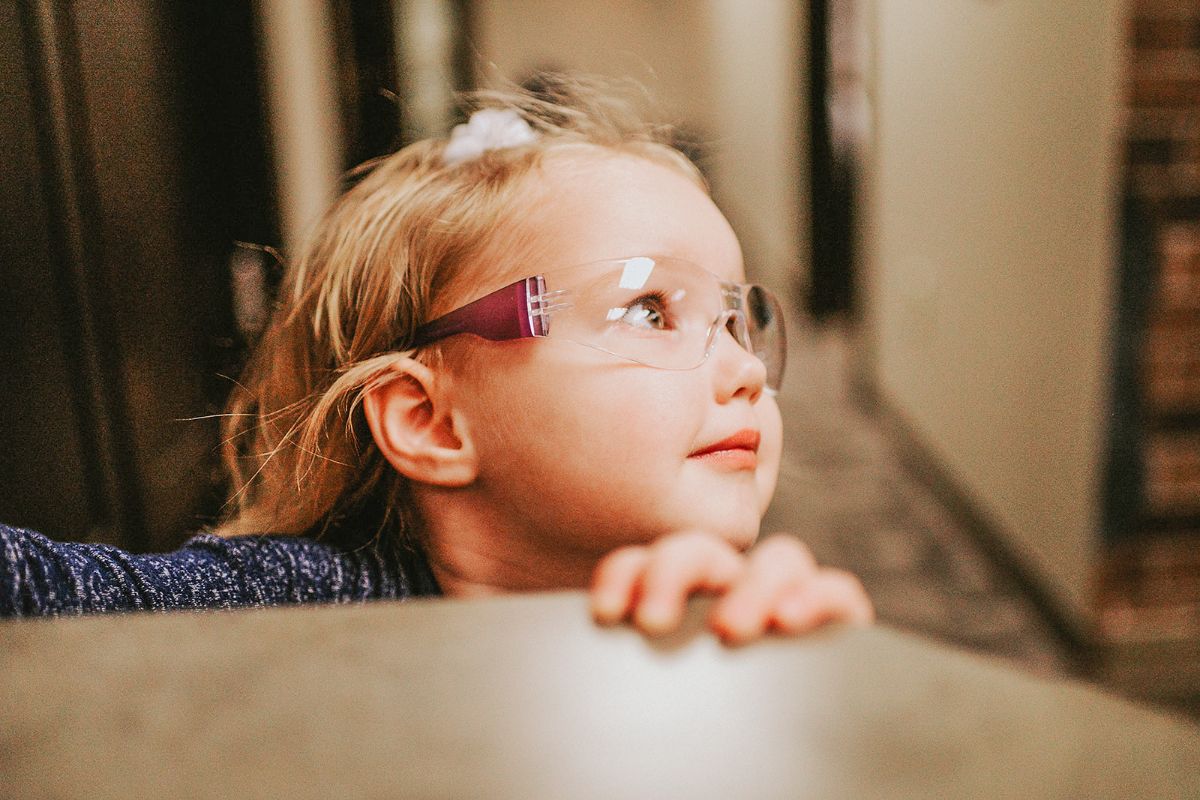For many years, braces were seen as a rite of passage for teens. Even now, most people associate orthodontics with tweens and teens in a full set of metal braces, but treatment can actually benefit patients of all ages! Here at Feil Orthodontics, we’ve worked with children, teenagers, and adults, and seen how beneficial our expert care can be. Regular orthodontic check-ups are especially important for kids. In fact, these are such a useful tool that the American Association of Orthodontists recommends all children receive an evaluation by about the age of 7!
Some parents are surprised by this recommendation. After all, most young children still have many baby teeth. But it’s this mix of primary and permanent teeth in a developing mouth that can work to our advantage! Not only are we able to identify any current or potential problems, but correcting them in the early stages can simplify any future treatment. In some cases, it can eliminate the need for future treatment altogether. Let’s take a look at why early orthodontic evaluations are so beneficial and how you can schedule one with us! Keep reading below to learn more.
What to expect from early childhood evaluations with Feil Orthodontics
When you schedule a complimentary consultation for your child with Dr. Feil, he’ll perform a painless but thorough oral examination. In doing so, he’ll be able to assess their bite, jaw growth, oral habits, and the eruption of their permanent teeth. This will help him identify any issues and determine if early treatment is necessary to correct them.
Even if immediate treatment isn’t recommended——and this is true for many of the young patients we see—these evaluations are still valuable! Most children will develop all their permanent teeth between 11 and 13, and by the time they reach their late teens and early twenties, the jawbone has hardened and stopped growing. Any orthodontic treatment undertaken after this point may require more time and involve more invasive measures, like tooth extraction or oral surgery.
Early treatment can help patients avoid invasive procedures like these. Even if additional work is needed in their teen or adult years, the total treatment time can be significantly reduced. A proactive approach to orthodontic care makes comprehensive treatment faster and more effective, giving children the benefit of a healthier smile as they grow! Here’s a breakdown of some common issues Dr. Feil will be looking for during your child’s orthodontic evaluation.
Tooth loss and eruption
Baby teeth usually fall out in a fairly specific order. If your child deviates from this pattern, it may signal a developmental issue that needs our attention. By the age of seven, most children will have at least four permanent molars and two to four permanent incisors. If your child has more or less than this, it could be due to missing, crowded, or extra teeth.
Problems with crowding or spacing
By the time a child is seven, their first adult molars are coming in. This helps establish the back bite and allows an orthodontist like Dr. Feil to assess it front-to-back and side-to-side. He’ll be able to identify any problems with excessive crowding or spacing this way, including premature tooth loss, too-small teeth, and those that are spaced too close or too far apart.
Misaligned teeth and jaws
Crooked teeth can be challenging to clean, increasing a child’s chances of developing cavities and tooth decay. They’re also susceptible to uneven damage and wear, which may compromise the shape and position of the surrounding gum tissue. In addition, these misalignments can cause discomfort, headaches, and a variety of other symptoms.
Overbites
Front teeth that noticeably protrude are often seen as a cosmetic concern, but they can also increase the risk of injury to a child’s permanent teeth and may affect how they speak. Although we can’t permanently correct an overbite until the child’s mouth has finished growing, we can help reduce the severity of the issue in the meantime.
Underbites
With an underbite, the lower jaw grows too far forward. This can develop due to problems with either the teeth or jaws. As with an overbite, we’ll usually need to wait until the patient has finished growing to correct the problem permanently. That being said, early treatment can still prevent bite shifting or damage to the front teeth! Children who receive early treatment for an underbite tend to be much less likely to need jaw surgery when they get older.
Posterior crossbite
A posterior crossbite can lead to crowding or cause the jaw to shift to one side. Some crossbites can also cause asymmetrical growth of the lower jaw, leading to permanent facial deformities if not corrected at a younger age. We do not recommend waiting until all the permanent teeth have emerged to begin treatment in cases like these.
Anterior open bites and deep bites
A deep bite can indicate a small lower jaw, with the child’s top teeth covering the bottom ones when biting. With an open bite, the overall bite doesn’t overlap enough. The latter can be caused by harmful oral habits like extended thumb sucking, bottle feeding, or pacifier use. Our team is happy to work with parents to help eliminate these practices early on, allowing the child’s dental development to continue normally.
Give your child’s smile the best start with Feil Orthodontics
If you have a child ready for their first orthodontic evaluation, we’d love to meet you both and take a look at how their smile is developing so far! Introducing regular visits with an orthodontist now can save them extra visits in the future, and if any problems are present, we can get a head start on treating them. As a family-friendly practice, you can trust our team to deliver world-class care in a comfortable environment! Get your child’s smile off to the best start possible by scheduling their FREE consultation with Dr. Feil today.


